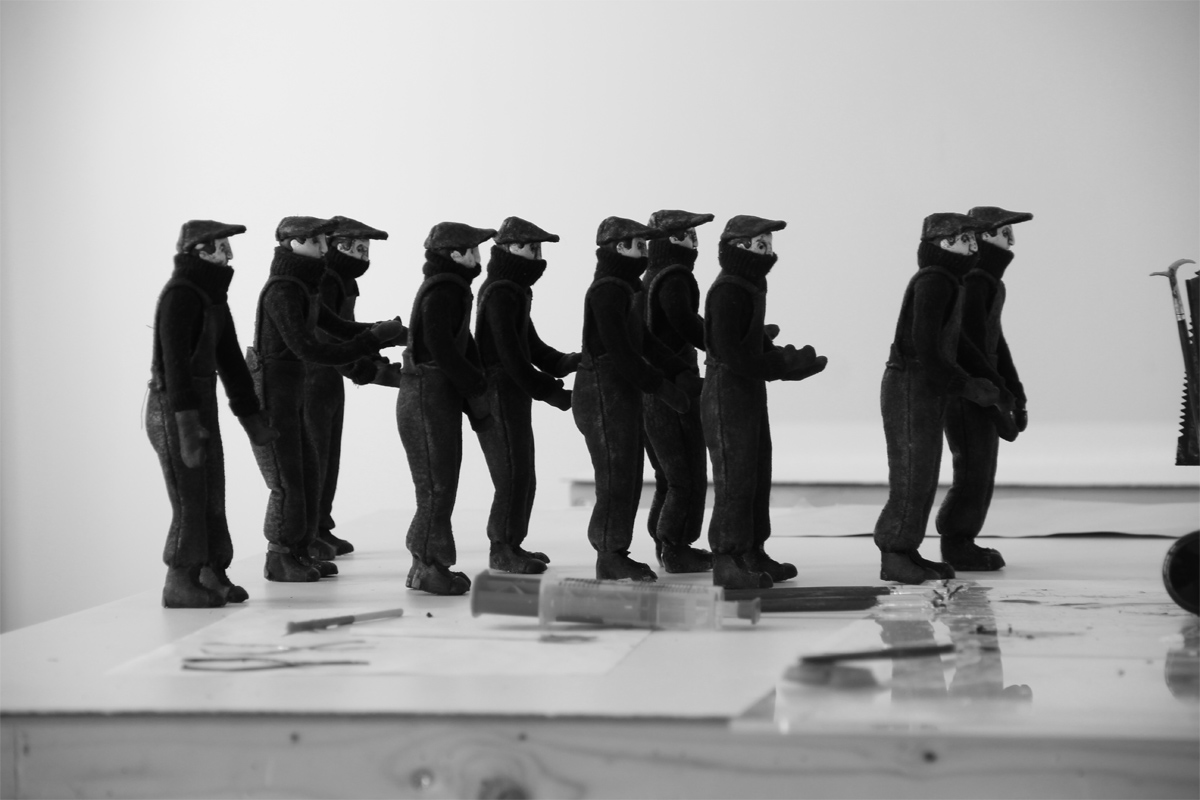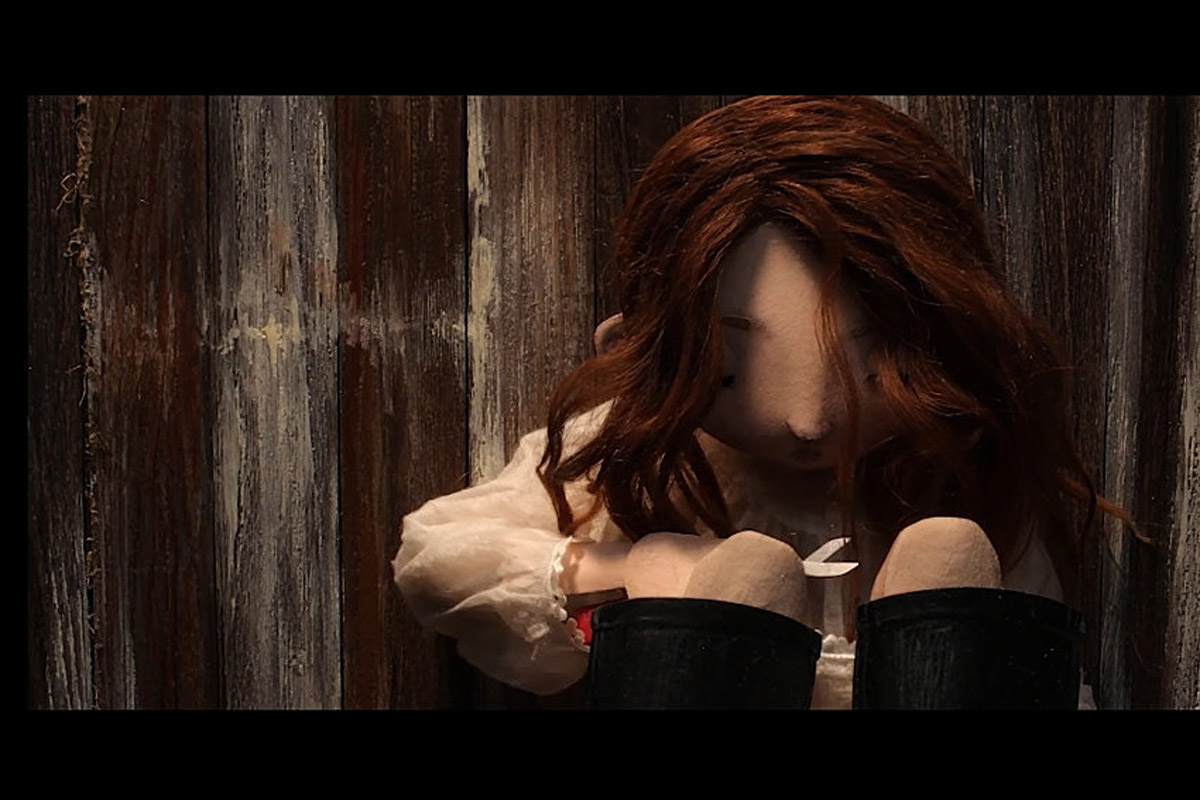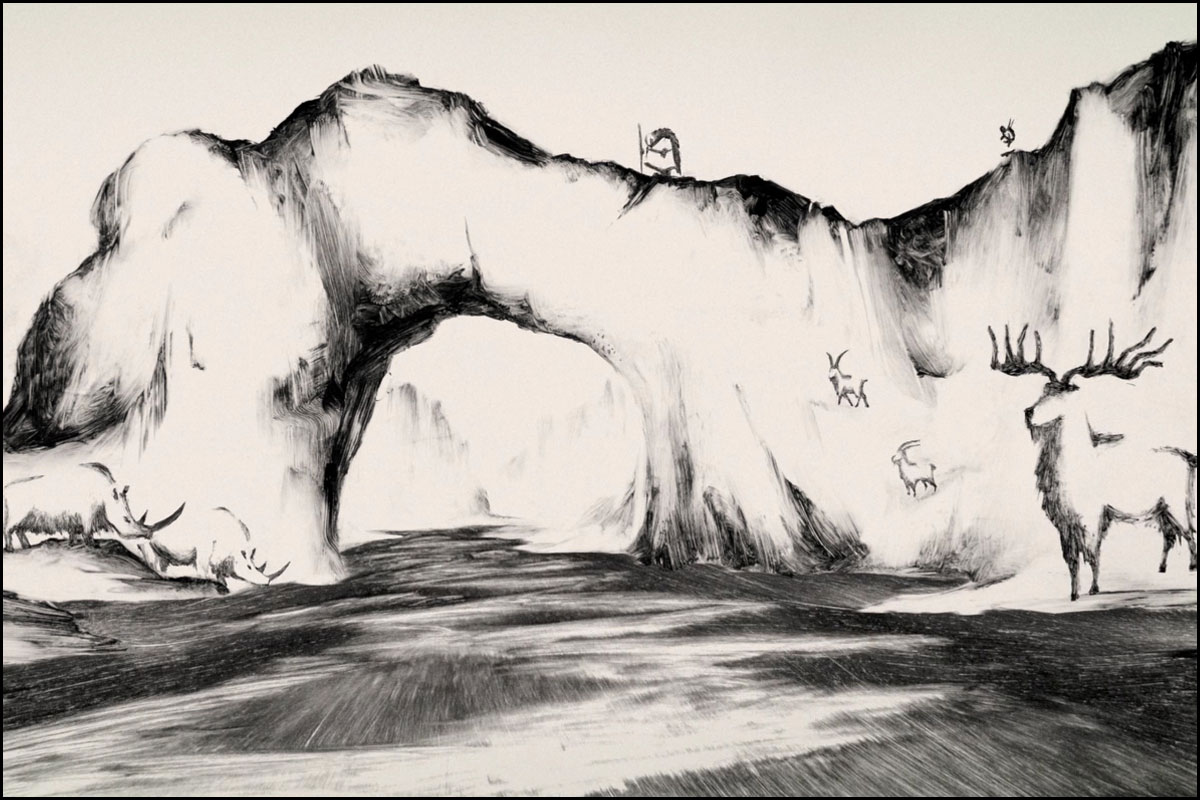Freeze Frame
Film Credits
Director, Writer, Animator, Producer: Soetkin Verstegen
Sounds: Andrea Martignoni and Michał Krajczok
Synopsis
In this stop motion film, identical figures perform the hopeless task of preserving blocks of ice. The repetitive movements reanimate the animals captured inside.
Freeze Frame is a very impressive short that we came across at the online version of ITFS in May 2020 as one of the nominated films for “International Competition” at the festival. So far, the film has been nominated for about 120 international film festivals and awarded at many authoritative festivals such as the Special Jury Prize Lab at Clermont-Ferrand International Short Film Festival 2020, Chris Frayne Award for Best Animated Film at Ann Arbor Film Festival 2020, Jury Distinction (ex ӕquo) at Annecy International Animated Film Festival 2020 and Golden Zagreb Award at Animafest Zagreb 2020, to name a few.
Freeze Frame is a non-dialogue stop motion animation film depicting human workers who are cutting out ice blocks and several animals trapped in the ice blocks by accented staging and camera work portrayed in the style of an actuality film. It is animated faithfully with meticulous visual expression, focusing on ice as a material. The 5-minute film gives the audience an immersive, visual experience and guides them into an original, realistic universe.
Interview with Soetkin Verstegen
Hideki Nagaishi (HN): Where did the initial idea of the film come from?
Soetkin Verstegen: It grew from different strands of thought that came together: A story about old negatives found in ice, preserved by the cold and developed a century later; the old practice of the ice harvest, transformed into an abstract ritual; and the poetic connection of early cinema and photography with science.
Wanting to work with this challenging material in stop motion was a motivation for me as well. A disappearing material in a technique where things are supposed to last. Ice is intrinsically immobile and unmovable; it is a flowing movement that came to a stop. I wanted to restart this halted movement.
HN: What was the biggest aim or purpose in developing this film?
Soetkin Verstegen: Futility and aimlessness are themes in the film itself. The figures are putting great effort into collecting ice cubes, which will disappear anyway. It might be mindless and conformist, but could also be a conscious and beautiful process in itself. Also, I like to see things develop myself while I’m making something. I start with something not knowing where it goes. I feel a need to experiment with ideas and one thing leads to another.
HN: What kind of message or experience do you want to deliver to the audience the most through this film?
Soetkin Verstegen: I would like it to be a poetic experience, where sound, light and movement interact to create a certain atmosphere. There are very universal themes in the film around decay, eternal life, work, hopelessness, etc. I hope it works as an idea generator for the viewer to mingle these ideas with personal thoughts, just as it was for me while making the film. I made it with the idea of creating an installation as well, where the repetitive actions go on and on without ending. A dark space with a few screens, radiating like ice blocks, where the viewers can linger as long as they like. I haven’t gotten around showing it in this way yet.
HN: What did you take care the most and what difficulties were present when you developed the structure of the film?
Soetkin Verstegen: The most difficult in the structure was making it simple. It takes me a long time to find the simplest solution for things. Once I find it, it seems like it could have never been otherwise. Then, I realize paying attention to detail is a lot of what makes the film. Doing very elaborate work on something that you might not notice, but you do feel somehow.
HN: How did you develop the animation?
Soetkin Verstegen: I made the film in a residency at Akademie Schloss Solitude in Germany. I was there for ten months with a fellowship. It is a residency in the wing of a small castle in Stuttgart: you are there with twenty to thirty other artists in different disciplines. I had a studio and living space to myself, where I could share lunch with others. It is not in the first place directed towards production and result, but towards having the time to think things through, develop and meet others: a very inspiring environment. I worked on the early ideas in the Saari residency in Finland for two months. Also, here I had a studio to work and a sauna to meet with the other artists.
HN: What were the difficulties with the materials and the technique, and how did you deal with them?
Soetkin Verstegen: Stop motion is always a bit of problem-solving anyway. I didn’t have an equipped stop motion studio, so making the film sometimes felt like camping and trying to find a way to open your can of beans without a can opener.
For the mist effect, I installed a set with different layers of plexiglass, sprayed with fake snow, and glass curtains. The puppets moved at different levels between these layers, which makes it seem like they disappear into the atmosphere.
For the ice sculptures I made replacement shapes in clay, then made molds of them with latex, filled them with water and put them in the freezer.












